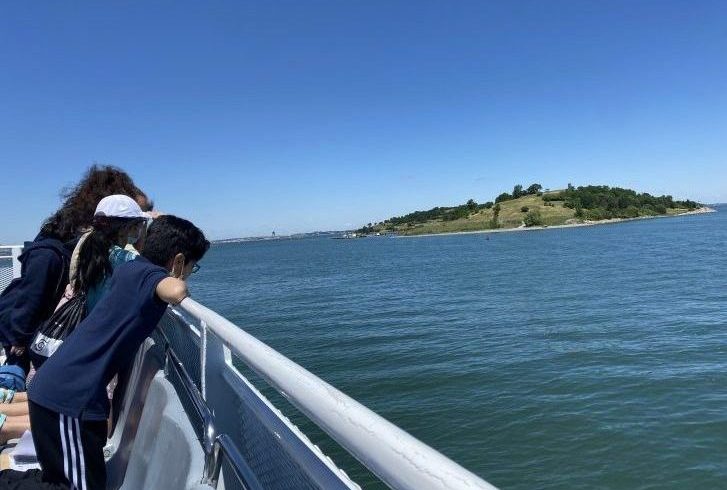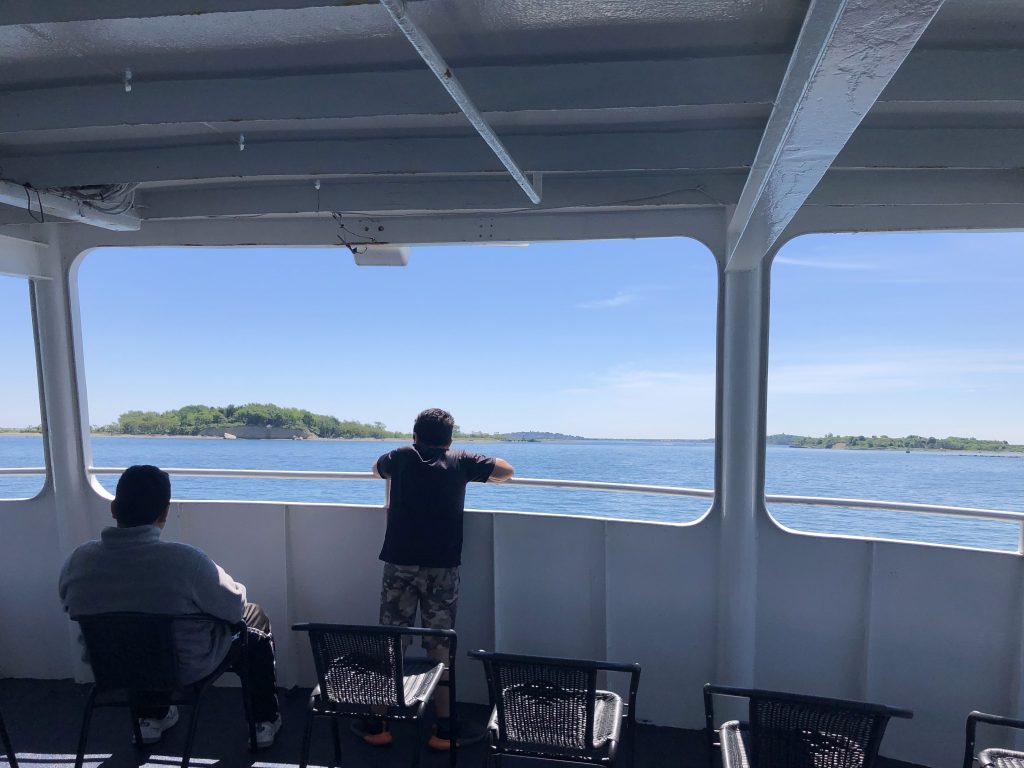Measuring Change with Boston Students


By Rebecca Shoer
Cabot Education and Community Engagement Program Manager
This spring, we were lucky enough to partner with our colleagues at National Parks of Boston to bring the Stone Living Lab into the classroom! Working with the O’Donnell Elementary School in East Boston, Jen Antocci (Boston Harbor Now), Cathy Radonic (National Park Service), and I joined fifth grade students for four lessons on coastal change, erosion, and climate change. We were especially excited to take the students into the field to learn beach profiling skills and explore Boston Harbor by boat!
All of our lessons centered on a single essential question: How do we know when something is changing? Each lesson engaged with this question in a new way, to help students begin to think about the importance of measuring change in order to inform our ideas of the future. These lessons are focused specifically on change in Boston Harbor, to connect students with their local environment and explore the science being done in their own community.
We started off our first lesson with a deceptively simple request to students: draw what you think of when you hear the word “laboratory.” We weren’t surprised to find nearly all the students drew scientists wearing lab coats and safety glasses, holding beakers or looking through microscopes. Time and again, studies show that students have a deeply-held stereotype that “scientists” are older white men who work in labs with chemical equipment. After our students shared their drawings, we showed them images of SLL scientists working in our laboratories – in salt marshes, on boats, even underwater!

Eight squares showing video calls including students in classrooms and presenters.
One of our goals in working with these students is also to connect them with the coast that’s quite literally in their backyard. After exploring the idea that science can happen anywhere, we turned our attention to Constitution Beach – only a mile from the O’Donnell School. Watching videos of the beach on a calm, sunny day and comparing it to the beach during a recent Nor’easter, we brainstormed with students: what did you notice in the videos? Do you think the beach changes? What kinds of things can we measure?
Our second lesson we brought the beach to the classroom with our DIY beach erosion models! Using plastic bins, sand, and model homes, students experimented with the different ways waves and storm surge can affect the beach. Our model coastal communities didn’t last long against fifth-grade hurricane force waves! The students then used small stones and pebbles to create hard barriers to try and protect their beaches from the waves. They discovered that their hardened shorelines were still ineffective at preventing erosion. We theorized that a seamless, tall wall might be able to stop the waves – but would prevent both humans and non-humans from accessing the beach and water. We left our students with the question: how could we measure this kind of erosion on a real beach?
We got to answer this question with students in our third lesson when we traveled to Constitution Beach! On a stunning day in June, we flexed our science and math muscles by learning about slope and how we can measure slope on the beach with beach profiling techniques. Students learned and practiced the same protocol our beach profilers used to track coastal erosion, and then saw how that data can be plotted on a graph. Our students shared some of the challenges of field science (it’s easy to get distracted in a beautiful place!), and showed off their skills working with decimal numbers. A true highlight of the trip was giving these students the opportunity to freely explore the beach. After two years of disrupted learning and fresh off MCAS testing, it was wonderful to be able to offer unstructured time outside to youth.
The final excursion for our students was a boat tour of Boston Harbor. This was the first time on a boat for many of the students, and we enjoyed a stunning day on the water. In addition to getting the opportunity to see many of the harbor islands up close and personal, students completed a harbor scavenger hunt and drafted designs for how best to protect coastal cities from sea level rise and erosion. We observed dramatic erosion on islands like Lovells and Peddocks, spotted planes and birds, and ended the day with a Junior Ranger ceremony.

Two students looking at an island from the boat deck.
We are so grateful to the science team at the O’Donnell Elementary School, and especially to the fifth grade class, who got to try out these lessons for the very first time. Special thanks as well to the Education, Youth, and Volunteer Engagement team at National Parks of Boston, who helped design and implement these lessons. We can’t wait to see what next year brings!